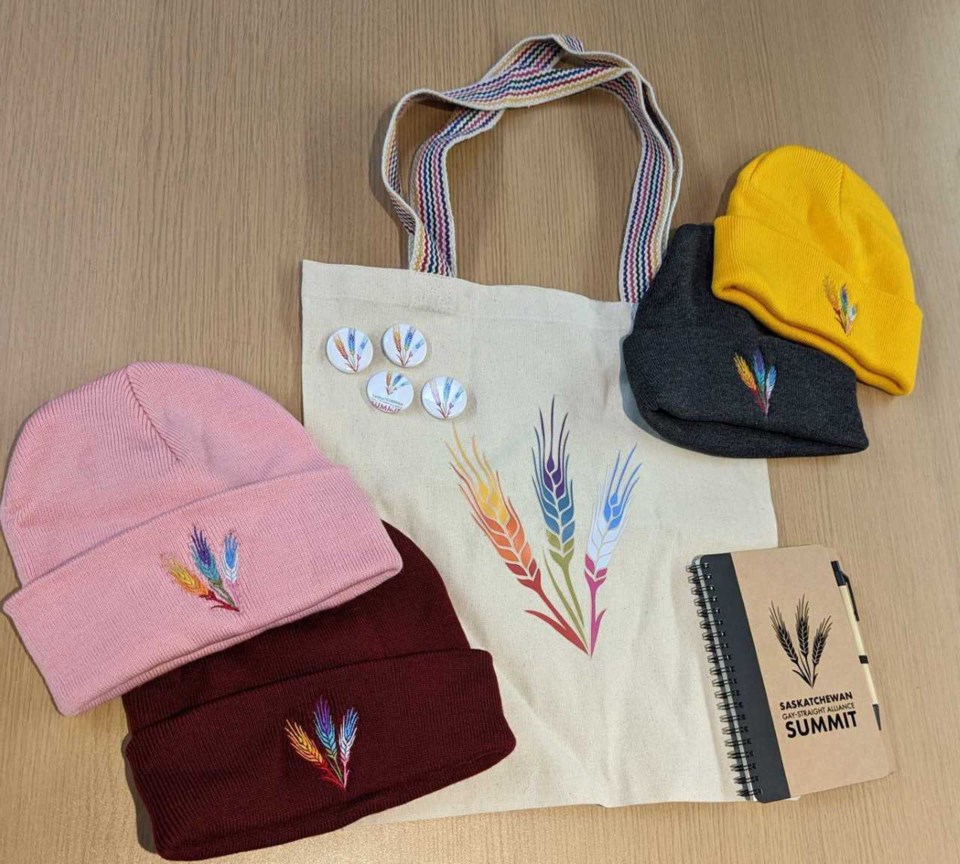SASKATOON - Warman High School was surrounded by a flurry of rainbows, when they hosted the province’s seventh annual GSA summit and hundreds of students and faculty from across Saskatchewan had arrived at the school to take part.
A GSA — which can stand for Gay-Straight Alliance, Gender and Sexuality Alliance, or a variety of other names — is a school club created to be a safe and welcoming space for LGBTQ2S+ students.
Started in the 1980s at a prep school in the U.S., GSAs now exist at thousands of schools in nearly a dozen countries.
Janna Bernatsky, child and youth education coordinator for OUTSaskatoon, said more Saskatchewan schools are starting GSAs every year.
“At this point, with middle school and high school students, it’s just an assumption that there’s going to be a GSA at their school,” Bernatsky said.
While this is true in larger cities, it's still a growing trend in smaller towns and northern communities.
One of those communities is Sandy Bay, a northern village on the banks of the Churchill River.
This year, a large group of students and a handful of faculty members from Sandy Bay’s Hector Thiboutot Community School drove more than nine hours to attend the GSA summit in Warman.
Though the school doesn’t yet have a GSA of its own, school counsellor Brenda Montgrand has been taking students to these summits for the last few years, as they explore the possibility of starting one.
“We were aware that some of the youth were gay or bi, and they had expressed that they didn’t know much about going to a GSA,” said Montgrand. “So we did our little bit of homework and found out what a GSA was and how important it is, especially to our young people.”
A place to be themselves
When her students have a chance to connect with other LGBTQ2S+ students and allies from around the province, Montgrand says it can be a transformative moment.
“They were excited, and a few were saying, ‘Now I know who I am. Now I know where I belong,’ ” Montgrand said.
There’s still some hesitation to get involved — Montgrand says some parents are reluctant to let their teens participate, and some students are worried about what others might say about being part of a queer-affirming club.
“But some of them are brave — really brave — and they say ‘I don’t care what anybody says. This is my life, not theirs,’ ” said Montgrand. “I find they’re getting braver that way. They don’t mind expressing who they are.”
Montgrand says parents are becoming more accepting, too.
“They’re getting on board because they’re starting to understand that this is who my child is,” she said. “If they want to be with their friends, why not let them? At least we know they’re safe.”
As a school counsellor, Montgrand has seen many students over the years struggle to come to terms with their queer identity, and live with the fear that there may not be a place for them in Sandy Bay or beyond. So whenever she sees students discovering and embracing who they are, feeling at home in their school community while they learn and make plans for the future, she treasures it.
“It’s joyous — and it’s a relief,” she said. “I’m really, really happy. I just wish I could do more.”
Creating a safe environment
For inspiration, Montgrand and her students have looked to long-established GSAs in the province. That includes Warman High School’s club, which will celebrate its 10th anniversary next year.
As that milestone approaches, teacher Sarah Gerrard says the club has had a “really positive effect on the school,” and is excited for what the future holds.
“I’ve had students tell me, ‘I felt like I belonged today. I felt celebrated for who I was,’ ” she said.
“It makes everything worth it when you see kids’ worlds open up and they realize, ‘oh, there really are people just like me that exist.’ It’s liberating.”
In the past, she says club members have advocated for changes that would make a more inclusive school environment, like having gender-neutral washrooms in the building and flying a Pride flag outside.
Now, she says, incoming students can take these things for granted.
Gerrard adds that while homophobia and transphobia still exist in the school, it's not as blatant or accepted today.
“I used to hear things like ‘that’s so gay’ all the time when I started teaching, and people would use that as a negative and an insult."
40 minutes down the road, at Clavet Composite School, students have used their GSA as a jumping-off point to learn about and advocate for many issues.
“It started as a GSA, but then a lot of the students wanted to talk about more than queer rights,” said French teacher Kira Barber. “They wanted to talk about women’s rights and racism, too. So they shifted it from GSA to a social justice club.”
Barber, who has been involved with the club since she started teaching in Clavet this year, said meetings are a very positive, welcoming space.
“The meetings generally involve a bunch of friends getting together and giggling and laughing, and then trying to figure out how to best raise awareness about various issues that they see,” she said.
It’s not always easy, Barber said the club’s posters get torn down or vandalized at times, and “there’s pushback, from students and parents.”
But club members, undeterred, keep organizing their meetings, making new art, and building their place “to feel safe and accepted.”




